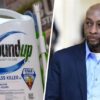Protecting PCBs
The scratched off and then handwritten changes make it seem like they wanted to at least pretend that September 1969 was the watershed moment I mentioned… as if “Oh no this document wasn’t from October, it was earlier, it was before we knew all this!” But regardless of any handwritten discrepancies, the document is clearly dated October 2, 1969, and it says the following:
“The objective of the committee was to recommend action that will:
1. Protect continued sales and profits of Aroclors;
2. Permit continued development of new uses and sales, and
3. Protect the image of the Organic Division and the Corporation as members of the business community, recognizing their responsibilities to prevent and/or control contamination of the global ecosystem.”
If you think that sounds somewhat badly, let’s look at p.4, with the heading “Probability of Success”:
“The committee believes there is little probability that any action that can be taken will prevent the growing incrimination of specific polychlorinated biphenyls (the higher chlorinated e.g. Aroclors 1254 and 1260) as nearly global environmental contaminants leading to contamination of human food (particularly fish), the killing of some marine species (shrimp), and the possible extinction of fish eating birds.
Secondly, the committee believes that there is no possible (wait, “possible” was crossed out to then say “practical”, so) – no practical course of action that can so effectively police the uses of these products as to prevent environmental contamination (WAIT – “to prevent environmental contamination” was actually changed to “prevent completely some environmental contamination”).”
Now this is where you’d probably expect talk of possibly phasing out at least the most dangerous PCBs and going down a different path as a company, right? Something along those lines… I mean that’s what you’d logically think to see next in light of all the other information that had come out in recent days. But instead, Monsanto said this:
“There are, however, a number of actions which must be undertaken in order to prolong the manufacture, sale and use of these particular Aroclors as well as to protect the continued use of other members of the Aroclor series.”
Then finally a few handwritten notes on the bottom of that same page:
“Toxicity towards certain species is high.
Persistence is high.
Likely hood of natural origin or degradation is remote.”
The document also references some more potential action plans, and that’s then followed by a list of reported problems, like PCBs found in milk in both Maryland and Georgia, and just more and more instances of PCB discovery. Finally (and this is the last thing I’ll leave you with from this absolute mountain of court documents), they also make the following disturbing statement in discussion of the Anniston Plant:
“It is impossible to establish a limit as to what can be discharged ‘safely’. Investigation has shown that the waters in receiving streams below the Anniston Plant contain significant (parts per million) concentrations of PCB. More ominous perhaps is the fact that sediment in the bottom of these streams miles below our plants may contain up to 2% Aroclor.”
(Report of Aroclor Ad Hoc Committee)
Alright I’m not gonna drudge though anymore of the Monsanto documents, many of which by the way have notations on them like “Read then destroy”. I read through almost everything to prepare for this week’s content, and I had no idea it would be as deep and as ugly as it was.
You know we’re focused on being the voice of reason here at The Walk a Mile Project, and we are never going to lose that, but I will tell you – good luck reading through all these court documents and not feeling mad, or sad, or just flat out disgusted in people behaving so badly… and also with such negligence and at times just flat out disdain for their fellow man – or any other living thing for that matter.
As you can see, every quote has an official document to reference, so pleas feel free to replicate my journey if you want to see just how bad PCBs and Monsanto really were. There are many more documents to look through than what I’ve shown here. But I will move forward now to the final part of this whole PCB situation we’re touching on today, which is what happened to that town of Anniston, AL as a result of all this? So hang in there, we are now on our way back UP and out of the rabbit hole…






